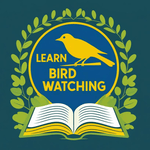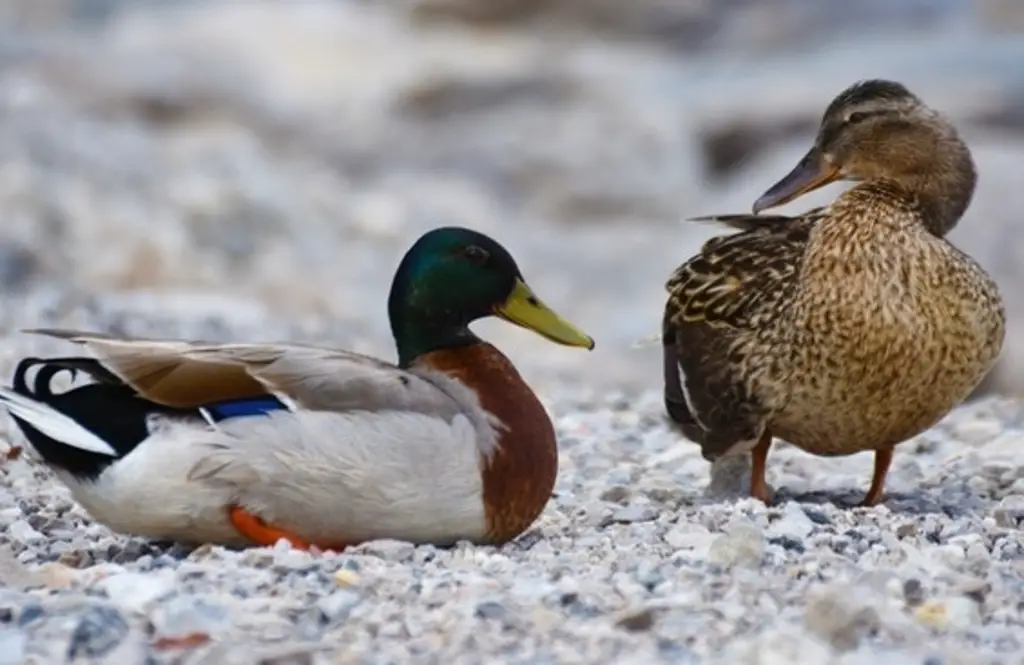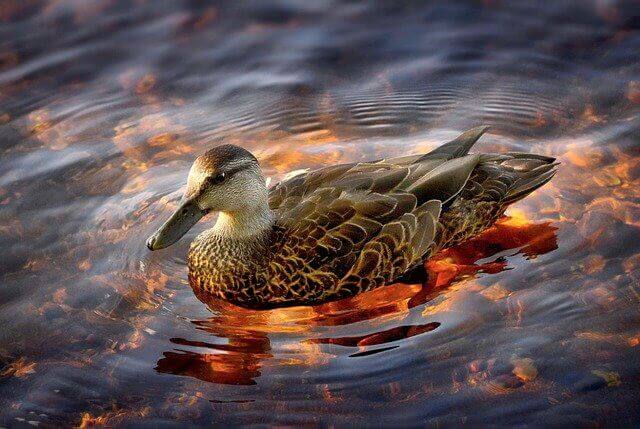Ducks are more than just waddling birds in ponds. They’re full of surprises! From quirky behaviors to surprising abilities, these feathered friends never fail to amaze. Whether they’re diving for food or communicating with a wide range of sounds, there’s more to ducks than meets the eye. In this article, we’ll explore 23 fun facts about ducks that reveal just how fascinating and entertaining these birds truly are.
Table of Contents
- 1 What Makes Ducks Unique?
- 2 Physical Features That Set Ducks Apart
- 3 Quirky Duck Behaviors
- 4 Fascinating Duck Reproduction Facts
- 5 Diet and Feeding Habits
- 6 Ducks and Their Role in Ecosystems
- 7 Cultural and Historical Significance
- 8 Surprising Duck Facts You Didn’t Know
- 9 Conclusion
- 10 Frequently Asked Questions
- 11 Author
What Makes Ducks Unique?
Ducks Are Found All Over the World
Ducks have an astonishing ability to adapt to a vast range of environments, which is why you can find them on every continent except Antarctica. From the lush, tropical wetlands of South America to the chilly, windswept lakes of northern Europe and Asia, ducks have managed to thrive in both freshwater and saltwater habitats. Their remarkable versatility allows them to inhabit marshes, rivers, lakes, and even coastal shorelines. This global distribution means that ducks have evolved a dazzling variety of shapes, colors, and behaviors to suit their surroundings, making them one of the most widespread and diverse groups of birds on the planet.
They Belong to the Family Anatidae
Ducks are part of the Anatidae family, which is a large group of waterfowl that also includes geese and swans. Within this family, there are more than 120 distinct species of ducks, each with its own unique set of characteristics and behaviors. Some ducks are tiny and agile, while others are large and robust, perfectly adapted to their specific environments. The Anatidae family showcases an impressive range of sizes, colors, and lifestyles, from the brilliantly colored wood duck to the understated northern pintail. This diversity is a testament to the evolutionary success of ducks, allowing them to occupy niches in nearly every aquatic ecosystem.
Physical Features That Set Ducks Apart
Ducks Have Waterproof Feathers
One of the most remarkable features of ducks is their waterproof plumage. Each feather is coated with a special oil that ducks produce from a gland located near the base of their tail, known as the uropygial gland. This oil acts as a natural barrier, ensuring that water beads up and rolls off their feathers rather than soaking in. As a result, ducks can spend hours swimming, diving, and foraging in water without becoming waterlogged or losing body heat. This waterproofing is essential for their survival, as it allows them to remain buoyant and agile, whether they’re gliding across a pond or braving a rainstorm.
Webbed Feet Make Them Expert Swimmers
Ducks are instantly recognizable by their distinctive webbed feet, which are perfectly designed for life in the water. These webbed feet act like built-in paddles, allowing ducks to propel themselves smoothly and swiftly through lakes, rivers, and marshes. The webbing stretches between their toes, increasing the surface area and making each kick more powerful. On land, their webbed feet give them a charming, waddling gait that is both endearing and functional. This unique adaptation not only aids in swimming but also helps ducks dig for food in muddy or sandy environments, showcasing their incredible versatility.
Ducks See in Full Color
Ducks have exceptional eyesight that goes beyond what humans can perceive. Their eyes are equipped to see a wide spectrum of colors, including ultraviolet light, which is invisible to us. This heightened vision helps ducks detect subtle differences in their environment, such as the shimmer of water, the movement of predators, or the ripeness of berries and seeds. It also plays a crucial role in social interactions, as many duck species have vibrant plumage and markings that are best appreciated through their advanced color vision. This ability gives ducks a unique perspective on the world and helps them navigate complex habitats with ease.
Quirky Duck Behaviors
Ducks Communicate with a Range of Sounds
Ducks are far from silent creatures; in fact, they have a surprisingly rich vocal repertoire. While the classic “quack” is familiar to most, ducks are capable of producing a wide variety of sounds, including whistles, grunts, croaks, and even soft coos. Each species has its own distinctive set of vocalizations, which they use to communicate everything from alarm calls and mating invitations to warnings about predators or signals to their ducklings. These sounds can vary in pitch, volume, and pattern, allowing ducks to convey complex messages and maintain social bonds within their flocks.
Not All Ducks Quack
It’s a common misconception that all ducks quack. In reality, many duck species have unique calls that sound nothing like the stereotypical quack. For example, wood ducks emit a high-pitched “oo-eek” sound, while some diving ducks produce low, raspy grunts or whistles. Some species, such as the muscovy duck, are almost completely silent, communicating instead through hissing or soft, breathy noises. These diverse vocalizations are adapted to their specific environments and social needs, demonstrating the incredible variety within the duck family and challenging our assumptions about what a duck “should” sound like.
Ducks Sleep with One Eye Open
Ducks have developed an extraordinary survival strategy known as unihemispheric slow-wave sleep. This means they can rest one half of their brain at a time while keeping the other half alert and watchful. As a result, ducks can literally sleep with one eye open, allowing them to remain vigilant for predators even while dozing. This adaptation is especially useful when ducks are sleeping in groups, as individuals on the outer edges of the flock can keep watch while those in the center enjoy deeper rest. It’s a fascinating example of how ducks have evolved to stay safe in the wild.
Fascinating Duck Reproduction Facts
Ducks Practice “Egg Dumping”
Some female ducks engage in a behavior called brood parasitism, or “egg dumping,” where they lay their eggs in the nests of other ducks, sometimes even those of different species. This clever strategy allows the egg-dumping female to pass on her genes without having to invest time and energy in raising her own ducklings. The unsuspecting host duck ends up incubating and caring for the extra eggs alongside her own. While this may seem sneaky, it’s a natural part of the reproductive strategy for several duck species, and it can lead to some very mixed broods in the wild.
Ducklings Can Swim Right After Hatching
One of the most endearing traits of ducks is the precociousness of their young. Within hours of hatching, ducklings leave the nest and follow their mother to water. They can swim, dive, and forage almost immediately, thanks to their instinctive behaviors and soft down. However, their feathers aren’t waterproof yet, so they can become hypothermic if left in water too long. While baby ducks and geese can briefly go into the water, they still need their families for warmth and protection. If you find a baby duck or goose alone, it’s likely separated from its family.
Ducks Have Elaborate Courtship Displays
The courtship rituals of ducks are a spectacle of color, movement, and sound. Male ducks, or drakes, often go to great lengths to attract a mate, performing intricate dances that include head-bobbing, wing-flapping, and synchronized swimming. Some species display their brightest plumage or produce distinctive calls to stand out from the competition. These displays are not just about beauty—they also demonstrate the male’s health, strength, and suitability as a mate. Female ducks carefully observe these performances before choosing a partner, ensuring that only the fittest and most impressive drakes get the chance to pass on their genes.
Diet and Feeding Habits
Ducks Are Omnivores
Ducks have a remarkably varied diet, which is one of the reasons they can thrive in so many different environments. As omnivores, they eat both plant and animal matter, including aquatic plants, seeds, insects, snails, small fish, and even crustaceans. This flexibility allows them to take advantage of whatever food sources are available, whether they’re foraging in a city park or a remote wetland. Ducks often adjust their diet according to the season, eating more protein-rich foods during breeding and molting periods and switching to seeds and grains when they’re abundant.
They Use a Unique Feeding Technique Called “Dabbling”
Many duck species, especially those known as dabbling ducks, have a distinctive way of feeding. Instead of diving underwater, they tip forward so that their heads and necks are submerged while their tails stick up in the air—a behavior known as dabbling. This allows them to reach aquatic plants, insects, and small creatures just below the water’s surface. Dabbling is an efficient and energy-saving way to feed, and it’s a common sight in ponds and shallow lakes. Some ducks will also graze on land, picking at grasses and seeds to supplement their diet.
Some Ducks Dive for Food
While dabbling ducks feed near the surface, diving ducks have evolved to plunge beneath the water in search of food. These ducks have more compact bodies and stronger legs, which they use to propel themselves underwater as they chase after fish, insects, and other prey. Diving ducks can stay submerged for several seconds at a time, using their specialized bills to sift through mud or catch fast-moving prey. This ability to exploit deeper water resources sets them apart from their dabbling cousins and adds another layer of diversity to the duck family’s feeding habits.
Ducks and Their Role in Ecosystems
Ducks Help Control Pests
Ducks are natural pest controllers, playing a vital role in keeping insect populations in check. As they forage for food, ducks consume large numbers of insects, larvae, and other small invertebrates that can otherwise damage crops or spread disease. In agricultural settings, some farmers even use ducks as a form of organic pest control, allowing them to roam fields and rice paddies to eat harmful bugs. By doing so, ducks help maintain a healthy balance in ecosystems and reduce the need for chemical pesticides, benefiting both the environment and human communities.
They Aid in Seed Dispersal
As ducks move through their habitats, they inadvertently help plants spread by eating seeds and later depositing them elsewhere through their droppings. This process, known as seed dispersal, is crucial for maintaining plant diversity and enabling new growth in wetlands and along waterways. Ducks often travel long distances, especially during migration, which allows them to transport seeds far from their original source. This not only helps plants colonize new areas but also supports the health and resilience of entire ecosystems, making ducks important partners in nature’s cycle of renewal.
Cultural and Historical Significance
Ducks Appear in Ancient Mythology
Throughout history, ducks have held a special place in the myths and legends of many cultures. In some ancient societies, ducks were seen as symbols of love, fertility, and transformation, often associated with water deities or the changing of seasons. Stories about ducks appear in folklore from Asia, Europe, and the Americas, where they are sometimes depicted as clever tricksters or loyal companions. These enduring tales reflect the close relationship between humans and ducks, as well as the deep respect and admiration people have felt for these adaptable birds over the centuries.
They Are Popular in Art and Literature
Ducks have inspired countless artists, writers, and storytellers around the world. From charming illustrations in children’s books to elegant depictions in traditional paintings, ducks have been celebrated for their beauty, grace, and playful personalities. They often appear as beloved characters in fables and fairy tales, teaching lessons about kindness, courage, or cleverness. The enduring popularity of ducks in art and literature speaks to their universal appeal and the joy they bring to people of all ages, making them an enduring symbol of the natural world’s wonder.
Surprising Duck Facts You Didn’t Know
Ducks Can Live Up to 20 Years
While the average lifespan of a wild duck is typically between 5 and 10 years due to natural predators and environmental challenges, some ducks can live much longer under the right conditions. Domesticated ducks, protected from many of the dangers faced by their wild counterparts, have been known to reach 15 to 20 years of age or even more. Their longevity depends on factors such as diet, habitat quality, and access to veterinary care. This extended lifespan allows ducks to form strong social bonds and even recognize individual humans over many years.
They Migrate Thousands of Miles
Migration is one of the most impressive feats in the duck world. Many duck species undertake long, arduous journeys between their breeding and wintering grounds, sometimes covering thousands of miles in a single season. These migrations require incredible stamina and navigational skills, as ducks must contend with changing weather, predators, and the need to find food along the way. Some species, like the northern pintail, travel from the Arctic tundra to tropical regions, demonstrating remarkable endurance and adaptability. The sight of migrating ducks flying in graceful V-formations is a true marvel of nature.
Ducks Have Been Domesticated for Over 4,000 Years
Humans have had a close relationship with ducks for millennia, domesticating them for their eggs, meat, and down feathers. Evidence suggests that ducks were first domesticated in Asia over 4,000 years ago, and since then, they have become an important part of agriculture and cuisine in many cultures. Domesticated ducks come in a wide variety of breeds, each with its own unique characteristics and uses. Their friendly disposition and ability to thrive in a range of environments have made ducks a favorite among farmers and backyard enthusiasts alike.
Some Ducks Change Color with the Seasons
Many ducks undergo a dramatic transformation in appearance as the seasons change. During the breeding season, male ducks often develop bright, eye-catching plumage to attract mates, while females remain more subdued for camouflage. After breeding, males molt into a duller, less conspicuous coloration known as eclipse plumage, which helps them avoid predators while they regrow their feathers. This seasonal change in color is not just for show—it’s a practical adaptation that helps ducks survive and thrive throughout the year, showcasing their remarkable ability to blend beauty with function.
Conclusion
Ducks are far more complex and intriguing than many people realize. With their unique adaptations, clever behaviors, and important ecological roles, they are truly a marvel of the natural world. From their global distribution and dazzling diversity to their quirky habits and cultural significance, ducks enrich our lives and environments in countless ways. The next time you see a duck gliding across a pond or waddling through a park, take a moment to appreciate the fascinating story behind those feathers. Ducks remind us that even the most familiar creatures can hold endless surprises.
Frequently Asked Questions
How smart are ducks?
Ducks are impressively intelligent creatures, capable of learning from experience, solving problems, and even using simple tools. Research has shown that ducks can recognize individual faces, remember locations, and communicate with each other in complex ways. Their intelligence extends to social interactions, where they form strong bonds with flock members and can adapt their behavior to changing circumstances. Whether navigating long migrations or outsmarting predators, ducks consistently demonstrate a level of cleverness that surprises many observers.
Can ducks be kept as pets?
Ducks make wonderful pets for those who can provide the right environment and care. They are highly social animals and thrive best when kept in pairs or groups, as companionship is essential to their well-being. Ducks need access to clean water for swimming and bathing, as well as plenty of space to roam and forage. With proper care, they can become affectionate and entertaining companions, often recognizing and responding to their human caretakers. However, potential duck owners should be prepared for the commitment and responsibilities that come with keeping these lively birds.
What is the difference between a duck and a goose?
While ducks and geese both belong to the Anatidae family, there are several key differences between them. Ducks are generally smaller, with shorter necks and more compact bodies, while geese are larger and have longer, more graceful necks. Their vocalizations also differ, with ducks producing a range of quacks, whistles, and grunts, while geese are known for their loud honking. In terms of behavior, geese tend to be more territorial and form lifelong pair bonds, whereas ducks are often more social and may change mates each season. Their nesting and feeding habits vary as well, reflecting the diverse adaptations within the waterfowl family.
By exploring these 23 fun facts about ducks, you’ll gain a newfound appreciation for these remarkable birds and their many contributions to the natural world. Whether you’re watching them paddle across a pond or reading about their fascinating lives, ducks are sure to inspire curiosity and delight. Share your favorite duck fact in the comments below and keep exploring the wonders of nature!
Related Post: Birds that Fly in a V Formation (With Photos, ID & Info)






